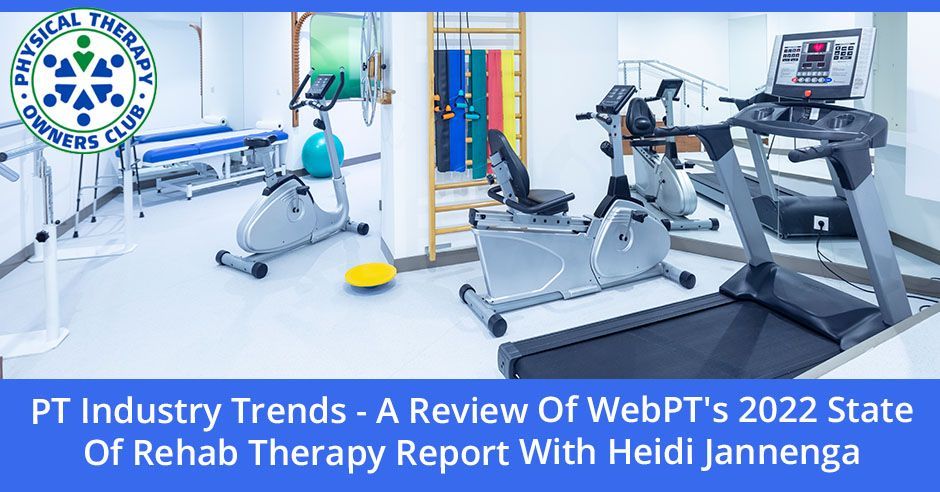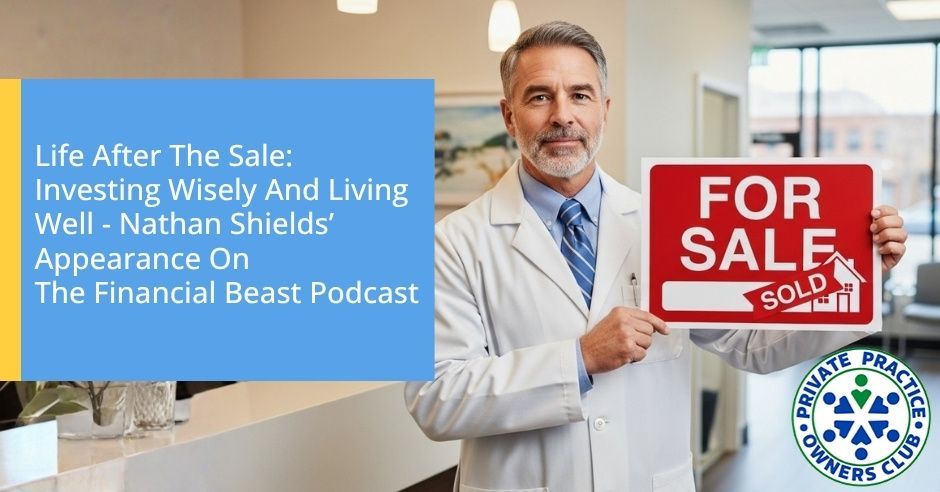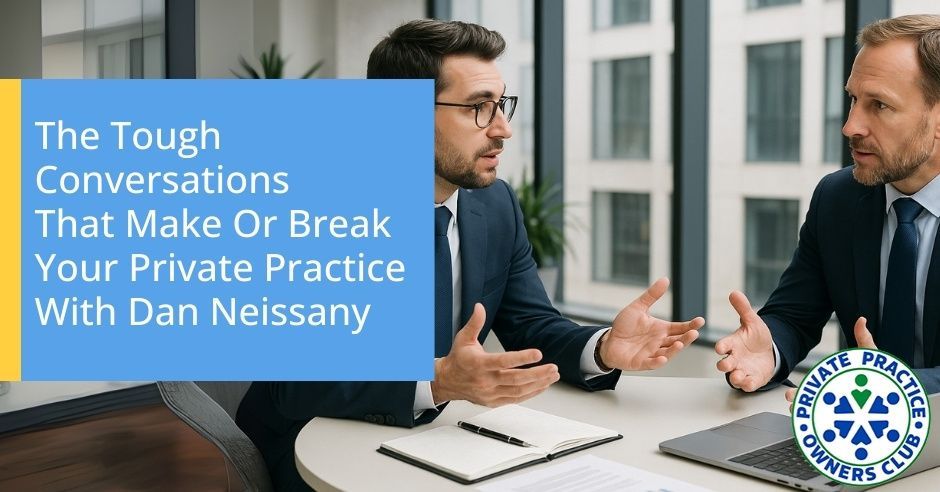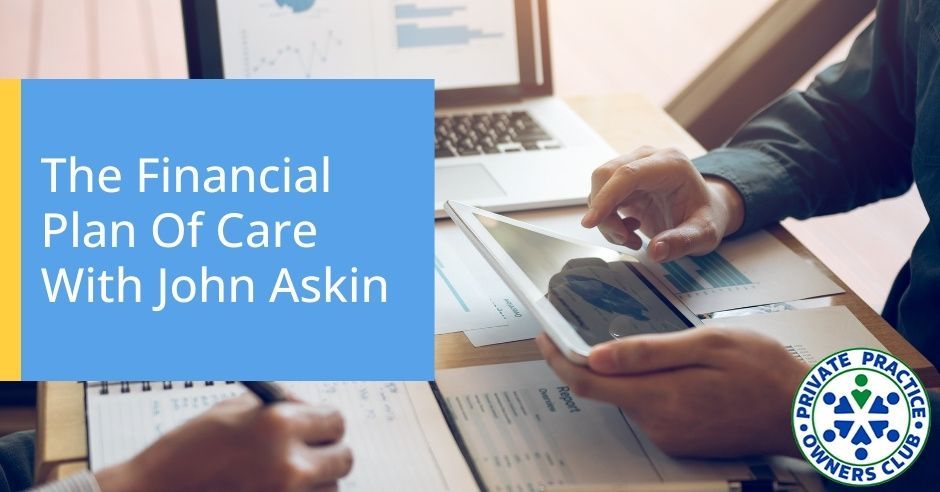PT Industry Trends – A Review Of WebPT’s 2022 State Of Rehab Therapy Report With Heidi Jannenga

While the digital pages are filled with questions about the rehab therapy industry in the future, answers flooded the pages. The sixth annual state of rehab therapy report discusses the most comprehensive analysis of the industry’s key trends, challenges, and opportunities. In this episode, Heidi Jannenga , the co-founder of WebPT , summarizes the 2022 State of Rehab Therapy Report results, assessing general statistics based on national PT survey responses. Among the report’s findings were the priorities of staff physical therapists, average salaries by experience and location, needs and concerns of outpatient physical therapy owners, and overall perceptions of the industry. While rehab therapy is being shaped, get ahead of the trends by tuning in to this episode with Heidi!
—
Listen to the podcast here
PT Industry Trends – A Review Of WebPT’s 2022 State Of Rehab Therapy Report With Heidi Jannenga
I’ve got industry stalwarts, WebPT Cofounder and Chief Clinical Officer Heidi Jannenga, joining me. Thanks for joining me again, Heidi. It’s been a few years.
Nathan, I am so excited to be here again. I know, it’s like pre-pandemic, post-pandemic. These blur of the last years, but I’m excited to be back with you.
Thanks for joining me to talk about the state of rehab therapy report that WebPT does on an annual basis. If anyone reading this one hasn’t read our previous conversations in 2018 and 2019 , I’d highly recommend you go back and read those. In the 2018 episode, Heidi talks about her journey toward founding and developing WebPT over the years.
We went into a lot of depth about what they found through their surveys. I continued our highlight with my coaching clients. One of the particular aspects that were about how patients don’t complete their full plan of care and the actual financial impact that has on small practice owners. If you want to look at the current results, Heidi, where can they find that?
For their state of rehab therapy report, they can go to WebPT.com/stateofrehabtherapy or you google 2022 State of Rehab Therapy Report. It will pop right up. We have done it for so many years now that Google pretty much knows this time of year for us.
They know how to put you out there. That’s awesome.
It is a very robust report, though. It’s like 60-something pages long and I’ll give a quick shout-out to our WebPT team, who works diligently to put this together. A shout out to the more than close to 8,000 people that participated in the survey and took the time to help contribute to the data that was robustly put together. Finding out what’s going on in the industry. We wanted to do it back years ago when we started this because there wasn’t anything else out there. We couldn’t find this data.
APTA has some of it, but as you know, it’s behind a firewall. For whatever reason, you’re not an APTA member, you don’t have access to that info. It’s been a labor of love because it informs us a lot about what current state and what people are thinking about in the future. We’d love to publicize and help others to understand what you can be doing in your business now compared to others and what they’re thinking. Also, how do you prepare for what’s coming?
I highly recommend it private practice owners read it. There are plenty of graphics, so it does cut down on the reading a little bit. Nonetheless, what you’re talking about, it’s a constant question. What are therapists getting paid for nowadays? You folks have that broken down by the amount of experience and even demographics in different areas of the country. What are some of the pain points that owners are seeing? What are some of the pain points that employees are seeing? In prioritizing those, I think it’s imperative for owners to stay on top, stay abreast of what’s going on in their industry. This is a great way of encapsulating that.
I highly recommend it. Before we get into the report, Heidi, big news came out earlier in 2022 about WebPT’s acquisition of Clinicient and other large, robust EMR companies. I don’t know how much you have put out there publicly about it. What can you share with us about that acquisition and how it affects WebPT and Clinicient clients?
Our goal at WebPT is all about empowering therapists to achieve greatness and practice. Clinicient and Keet together are in front of me, if you will, in terms of having a similar mission but competitors at the same time. We happened to have this opportunity to put the companies together. What we loved about the Clinicient and Keet were the similarities to the mission and providing that to technology and data solutions to help their providers, which was the more focused on the middle segment of the size of practices. That helped us in our continued growth strategies and market share. The Insight Go platform has some overlap in what we’re doing but also has some things that we aren’t doing.
I think the big one for us, for sure, was on Keet with the value-based care train that’s coming along and providing that integrated patient and provider solution to track and benchmark patient outcomes. Even more robustly perhaps than what we were doing before and adding some of the integrated communication and capacity that Keet does. We’re excited to keep and continue to integrate some of those. That’s the work that’s being done now, which goes along with our platform strategy at WebPT.

I talked to the founder of Keet a number of years ago, and what they offer was great with the Clinicient. Is there anything outside of Keet where you saw Clinicient has a strength that we could build upon that would be an added bonus to the current WebPT clients, whether that takes some time, even some integration? Is there anything besides Keet like that?
On the Clinicient side, one of their strengths was a lot in some of the business metrics and analytics that they had the capacity to be doing. We’re honing in on some of those and incorporating some of that information and learnings that the Clinicient was doing. Their Insight Go was doing so well. We’re pulling those into the WebPT platform as well. The bigger piece of that also was payments.
Another big piece is the payment side of things. They had started down an integration with a payments product that allows patients to complete their payments online. Something that we’ve been working pretty hard on the WebPT side as well. You’ve got two different platforms that are merging together. In a little bit, one’s farther ahead than the other, so there’s so much learning that we’re doing to make sure that when two platforms are able to come together, we’re taking the best of both worlds.
I’m excited to hear about the business management side of things because that’s something where we look at a majority of VMRs across the board for physical therapists. It’s hard for owners to get to dive deep into some of the details regarding their metrics. We can’t get a lot of those metrics or some of those metrics without doing them manually that we wish we could get from EMR. I’m excited to hear that you are pushing forward to improve that side of the EMR space.
It reinforces, Nathan. We’ve always talked about because we were the first web-based application in the market that we had the largest contiguous data set to understand and be able to dive deep. One of the big things on our plate is to organize all of the data that we have because it needs to be digestible in order for us to push it back out. While we have a lot of it that’s available, it may not always be available in the way that people want to intake it. Again, those specific metrics that people want to see to run their businesses.
Now we have a whole other pile of information and data to add to our robust data lake, but it’s now organizing all of that and making it consumable to our members. That’s one of our biggest goals and a huge win for our members. Also, the industry, as a whole, to be able to get even more insights like real data. Not even in a survey format but through actual workflow data and things like that. Patient information that we can glean outcomes, workflows, and all that stuff.
I’m excited to hear that and congratulations. I’m sure it’s a huge undertaking at the same time.
It is. Anytime you go through a big merger like this, they have been in the market even longer than we had, the Clinicient products. Came on board maybe a few years before we did. You’ve got a lot of legacy information and bringing the branding together. It’s an undertaking, but the Clinicient team is amazing. They had some great folks that are now part of the WebPT team. Our whole mantra has been better together and I believe that.
Let’s talk about the report and hit some of the highlights with it. Tell me, where do you want to start? As you oversaw this and information got brought back to you and even as you go over the report yourself nowadays. What is one of the key takeaways that you take away?
As you’ve seen through the report, there are a lot of things that unfortunately keep getting repeated year over year. Reimbursements are continuing to decline and salaries are maybe not commensurate per se to where people think they should be. Those are some of the newer things I think that we should be paying attention to. It’s not dissimilar to other industries and things that you’re hearing about in the news and other professions. One of the key themes was around employee burnout. Consequently, what are the things that employers should be thinking about with regard to retention?
The big stat was that our professions turnover rate on average this year was roughly around 9%. Meaning 9% of employees were turning over and moving jobs. That’s considerably higher than the industry or the healthcare industry average, which is about 3.7%. That’s significantly higher. There’s obviously some discontent and it’s also an indication of opportunity. There are a lot of jobs available. If therapists are not happy in their current position, the grass might be greener over here. There are vast opportunities for clinicians and PT clinic staff to be moving around now.
As you got deeper into that, what were some of the reasons behind the turnover? Was it typically salary related? Was it a change of location or want to move out of state or opportunities? You’re seeing that nowadays or you saw it during the tail end of the pandemic . People were thinking, “Do I want to live here? Maybe there are some other places I might want to consider.” What are the deeper issues related to turnover?
The value-based care train provides an integrated patient and provider solution to track and benchmark patient outcomes.
Click To Tweet
That’s one of them. It’s a function of the pandemic. People want to have options now. They’ve reassessed their life and what they’re doing with themselves. I think patient volumes have increased pretty significantly. We had a year or two that volumes have been down in terms of patients even coming into practices. We’ve been hit by more payment adjustments. You’ve got the PTA differential that’s hitting us now. When your top-line revenue, as you talk about a lot, goes down, you have to make that up in different areas.
You either are differentiating your revenue and what revenue is coming in the door? More businesses are going to cash base. That’s something we saw in our report as well or you increase your volume. That’s the other trigger that you have to pull to increase the revenue. That’s what we saw. We saw patient volume soaring to twenty patients per therapist per day and some practice settings. Some people don’t think that if they don’t have the infrastructure to support being able to see twenty patients a day, that’s perhaps not a volume that they think they should be or they want to be seeing. It’s too much.
From this report, do you see as if there are opportunities for owners to look at it and say, “I need to increase salary?” What are the employee surveys coming back and saying that they wish they had more of in order to be “happier” in their current space and minimize that turnover?
That’s the first trigger that most leaders will look at. That’s something we showed in the report as well. This disconnect between clinic owners or leaders, that’s an immediate trigger, like, “We’ll have to pay you more,” then they’re complaining that their therapists are not commensurate with what they’re making on a revenue basis.
There’s some creativity and it’s not just that. We know that student debt now is at the highest level it’s ever been. We have 16% of students that are graduating with more than $150,000 in debt. That’s 5% more than when we last spoke in 2018 and 2019. That number is creeping up. It’s continuing to grow. Being creative in your holistic look at your benefits package that doesn’t have to be your salary adjustment. People also now have the opportunity to work from home, whether telehealth or virtual visits, which we haven’t embraced as a profession.
It spiked to a good 50% of practices for a while in 2020 and a little bit into 2021. We’re embracing those virtual visits. Now that’s plummeted down to 15%, 18% of practices doing virtual visits consistently. We saw that it worked. The research is now out saying that outcomes are better sometimes or a lot of times. There’s no significant difference between a hybrid plan of care versus an all-in-person plan of care. As a matter of fact, the adherence to a home exercise program and whatnot, especially if you’re during that plan of care time that you’re using a system like Keet or WebPT to have that interaction with your patients along the way virtually.
That is better than it would be if they came in for their visit. You give them their home exercise program and you see them the next time. There’s no interaction in between. That “work-life balance” or this balance between having some days where you’re at home doing virtual visits and you also are in the clinic, those are the practices that see much higher NPS scores and higher retention rates for their employees than other practices.
I think maybe the keyword there is some flexibility. Would you say they want maybe, “If I’m going to work for you, is there a way that I can maybe manipulate my schedule and not be on a fixed schedule week after week, so I can see the dentist once in a while or pick up my kids after school at least one day a week?” That flexibility and, “Even if I do so, where can I make up for it in production to justify my higher wage? I’ve got this huge student loan debt. What can you do to help me?”
I think the more owners are able and that’s the difficult thing. I know I’m talking to owners now who are already treating patients full-time. Now I’m telling them, “You got to use your brain energy on providing more flexibility for your team.” That can be difficult, but if they can set aside some time to find the opportunity or provide opportunities to be flexible or provide opportunities for their teams to have some flexibility within the workspace and still become productive. That can help some of this retention burnout stuff that we’re talking about.
One of the most surprising stats that we saw and goes to what you’re saying is smaller private practices now are struggling with the burden of reimbursements declining, salary wages increasing like this whole being able to retain their employees. It takes work. If you’re an owner-operator, that doesn’t leave you a whole lot of time for your own flexibility. The biggest a-ha stat was that almost 30% of practices hadn’t done anything.
When we asked them, “What are you doing with regard to working on retention strategies for your practice?” Almost 30% of them said, “I haven’t done anything.” Maybe if you aren’t having any problems and you are retaining all your staff, you don’t have to do anything and you’re good to go. We know that that’s probably not the case. It was 70% of respondents said they were considering some professional change.
It behooves every private practice to at least, regardless of size to be thinking about, “I can’t keep doing what I’ve always been doing. I need to constantly be iterating and evolving my practice to understand and build relationships with my employees to understand what are their needs and wants and how can I be accommodating and still meet the needs of the business and be able to share that with the employees?”

The default for some of the owners is that if I’m going to retain my team, I need to pay them more. They come up against the conundrum of, “If I pay them more, that eats into the bottom line more.”
They have to see more patients.
It becomes this vicious cycle. I know your report isn’t coming around to saying, “These are the solutions.” They’re saying, “These are some of the problems.” Are you seeing a disconnect between owners and employees as to what the major issues are between the two? Are they saying the same things or are the employers seeing different problems the employees are?
No, we did see a difference. We asked specifically, based on the type of role that you play in your practice very specific questions around this retention. I think that the biggest disconnect with regard to clinic leaders was their thought that it’s, “I need to pay higher salaries,” and that was only the third reason that employees. It wasn’t the highest reason employees said they wanted to leave. It wasn’t necessarily that they needed more money.
The second reason I think was they were considering it. What we talked about is the balance of flexibility within their workplace, having the ability to think about a different schedule. This isn’t new, to be honest. Even as a clinic director years ago, we did 3, ten-hour and 2 half days to provide that flexibility. You do half days where you could go off and do appointments during the day and things like that.
We had people that had second jobs or went and did some PRN work on those half days to where they could make up some extra dollars if they wanted to. Volunteered at schools. There are a lot of things. You name it. It was around that flexibility and that didn’t pop up in the understanding from a leader’s perspective of what they thought. That one takes a lot more thought and creativity. It’s not like a click of a button, you can make a change like I can up your salary. That’s probably part of it too.
It’s interesting, though, in the report, it also said that 13% of the therapists were considering leaving healthcare altogether, getting out of it. Their biggest reason was higher wages. Although it was third on the priority list, getting out of the industry had to do with higher wages. I wonder if that’s because there’s not necessarily a clear path. There’s a cap.
If you’re going to going to be a team PT without any responsibility or authority, there’s going to be a cap to what you can generate. If you don’t want to change over to a higher paying scope like home health or skilled nursing facility or something like that, you’re stuck. Higher wages can become an issue, but they’re looking at it in terms of the professional together.
I’ll anecdotally say we have had the highest number of therapists apply for positions at WebPT this past year than we ever have in years of existence. We know that to be true, anecdotally. PTAs, OTs, PTs, us, even as speech pathologists, run the gamut across the rehab therapy industry. The reason is higher wages because they’ve researched it and they recognize that they can make more money. It also has to do with that top priority, which is flexibility. I can work from home if I work for a tech company. For a non-clinical position, I may have more flexibility in my work schedule.
I know in the past, it’s usually number one or I don’t know if it’s ever not been number one. Isn’t documentation usually one of the biggest pain points for providers? Is it still?
Touché. The administrative burden on therapists is one of the biggest factors leading to burnout, 100%. We take that very seriously at WebPT because we pride ourselves in trying to make the most efficient platform and achieving greatness doesn’t equal burnout. It means being able to do what’s best for your patient, document that efficiently and effectively in a manner that allows you to do what you want to do and that’s good. Put your hands and treat the patient. Not sit behind a computer and have to document.
It’s one of those things that makes our development team always like it’s a motivator for them every year in this report to see we are making any strides in this area. It’s a hard one because it’s the necessary requirement, but at the same time, it’s the bane of our existence as therapists. It’s not what we want to be doing.
The administrative burden on therapists is one of the biggest factors leading to burnout.
Click To Tweet
I wasn’t necessarily attacking WebPT.
No, it’s okay. We take it. We understand we’re part of it.
It’s a necessary evil. After selling my clinics, I decided, “Maybe I’ll start seeing patients again.” That was the one thing that I remember I’d love seeing the patients again, but as I was documenting, I was thinking, “This drains me.” It drains me. Speaking of that and I’ve been out of the game bit for a few years now. Where is WebPT on, like dictating to notes and maybe something that’s a little bit easier for documentation if people were able to dictate?
Voice-to-text is real. It’s obviously browser dependent, so whatever browser you’re using, you can click into the WebPT Talks boxes and whatnot. You can text to type or speak to type. Voice text is the right term there. There are some opportunities. We even heard some practices because of the efficiency of it. Our hiring scribes, they love doing this with PT students because they get, not necessarily DPT students in practice but those that are shadowing and wanting to get into PT school.
They are following them around through their treatment sessions and evaluations and whatnot, they’re working as scribes to get in the information being tested and objective measures and things like that. That’s another method that I’ve heard is working in a way that takes a little bit of that burden off the therapist. It’s got to work financially and in the grand scheme of things too.
I highly recommend it. I have a friend, Mark Moore, in Arizona. He started a rehab scribe company. He’s using it in his practices to great effect to the point where the therapists are going home at the right time and also capturing appropriate coding. Maybe the minds of the PTs are jumbled at the end of the day and they’re trying to get through it as quickly as possible. They can read off the appropriate care they’re providing during the course of the day or during the course of treatment. If the rehab scrub rolls up to them and says, “What do you want me to say?”
At the end of the day, it should be done at the point of care, which we know the majority of the documentation is not done at the point of care. That’s also the benefit that it’s truly capturing it at the point of care. I think there are some definite strides in those areas that are going to need to be made to get more efficient in our documentation.
We always push it back on the advocacy too of, “Let’s remove some of this administrative burden that we all have to do rather than adding more to it.” Every year, I feel like there’s MIPS, new measures and this and that. More hoops to jump through to get paid and get paid less. Unfortunately, all of those things don’t add up to a very positive vibe when that part of your job continues to grow and the actual interaction with your patient is sometimes shrinking.
Where do you see some technological advances being made in the EMR space over the next 2, 3, 5 years? What can we look forward to as an industry?
We just got approved for the RTM codes, so the therapeutic monitoring codes. We launched a new RTM dashboard that allows this patient engagement and tracking of a patient’s progress with therapists able to remotely monitor some things that are happening with her home exercise program, etc. I think that’s going to be a big interaction. Technology is going to allow this more hybrid. That’s how it’s going to exist.
I think that’s the future of where we are going to be going. Hopefully, sooner than later, is this hybrid model of some interactions that you do via technology and interactions that you have when you’re putting your hands on the patient in practice. It should give us an opportunity to reach more people. We always talk about the 90%. The 90% of patients that we aren’t seeing now that should be seeing a therapist.
It moves the needle, in my opinion on that as well. That’s one area. I think the RTM codes, being able to utilize virtual visits and that’s all technology-enhanced. With more integration with the EMR and being able to have some of those data points automatically documented in your reports or in your objective findings through RCM or whatnot. Some of those things in the future will be happening, which will hopefully make that documentation less tedious.

For those who don’t know remote therapeutic monitoring, it typically has to do with wearables. Am I wrong? It’s usually wearing some device that monitors.
It doesn’t have to be. That’s one that is one piece of it. There are some cool new technologies coming out with regard to the wearables that you can obviously, blood pressure or other things that you can pull that data through Bluetooth right into your documentation. It also has to do with, for example, doing your home exercise program. This is how we do it through Keet.
With the patient acknowledging or completing different exercises through the home exercise programs, the digital home exercise program, documenting how many reps and sets and things like that. Your interaction with the patient on that for progress and feedback, those all also qualify for the RTMCPT. It’s that interaction with the remote not being in the practice when you’re interacting or conducting some feedback with the patient.
A patient, in that case, would have to go into an app with a preloaded exercise program and say how many sets and reps they performed on that.
For example, you can do all of that through Keet.
Awesome. What are you focused on now with your position in WebPT? Where are you spending most of your time and looking forward to?
We have a new set of executives at WebPT, which in every phase of a company, you have this next-gen leader that takes you from one place to the next. We’ve conquered a ton of our goals when we talked last in 2019. We had accomplished a lot of the goals that we had set for ourselves. Now, we’re looking 2020 to 2025 and what that looks like for WebPT.
We have an amazing new CEO that we brought on board, Ashley Glover. She came on board in November of 2021 and a new set of some other executives in the company as well, helping them to integrate, get to know the industry, all of that, staying true to our core culture and roots. I’m a stability lightning rod, if you will, for the organization at this point. It’s not hard for me because the passion is there. It’s like, come find me. I’m always a lightning rod for something I feel like.
That’s a piece of it and continuing to work on the product. A lot of ton of external education as you we’re doing now. That’s been great. My passion project now is called Rizing Tide , which is a foundation that we’re offering scholarships to BIPOC students, so underrepresented populations who are entering into the PT field as well as some residency programs. We have our second cohort.
I will make sure that you get our phenomenal list. We would have been blown away, Nathan. It is the most inspiring thing that I have been a part of in such a long time with regard to seeing these students coming in and the impact we’re having by providing some financial assistance to get them through their PT programs.
As you know, the student debt crisis is real. If we can help a handful of students, we’re giving away ten scholarships in 2022. In 2021, we gave away five to the DPT students. We’ve doubled in size. It’s phenomenal. Every generation probably says this, but as I get to know more of these DPT students, our next generation of PTs, we’re in good hands, for sure.
If owners wanted to direct those who are working with or for them that aren’t providers and are looking to go that PT route that would qualify for that, where would you direct them?
For the health of the future of our industry, we need to keep awesome people.
Click To Tweet
You can go to Rizing-Tide.com. We closed our cross scholarships, which are for the DPT students, but we are open for residency scholars at applicants now. It will end on September 30th. We had an amazing contribution by Hands-On Diagnostics. They were so generous to offer a full scholarship for their residency program to a student. Anybody who’s interested in learning more about the whole EMG world and doing a residency program through HODs, we are facilitating a full scholarship, which is an amazing, generous contribution.
Are you also taking donations if people were interested in donating to Rizing Tide?
Yes, we are. You can go to our site and you can ask for more information. We are taking donations.
Congratulations for something that’s so fulfilling, I’m sure.
It is very fulfilling for sure. We’re one of the largest scholarships that are available in the industry at this moment. Our DPT full scholarships are worth $14,000 a year, renewable for up to three years if they’re in a three-year program. The rest of the programs are $10,000. It’s a significant difference in these students’ lives. It’s amazing. You can go on our site. We have videos of all of our previous scholars. We’re so proud of them. They are an amazing group of up-and-coming therapists who I can’t wait to call colleagues.
Anything else you want to share as you have the ear of some of the PT owners out there that are reading?
I would say take an hour to sit with the report. You can download it. It’s available digitally and sit with it. Take a moment to review some of the data points. You were right and we don’t necessarily provide solutions. Our goal was to present you with the issues at hand and show you how this is progressing over the years and what are the big a-ha moments for us that we found. I would ask that people take the time to read the data, absorb it, and make if it’s one or two changes in your practice. You don’t have to overwhelmingly look at it all and say, “I’m not doing anything.”
It’s like, “No, what are the maybe one or two pain points that you identify that, yes, I can make a difference in my practice to help with retention or help my current employees if they have student debt?” Build better relationships with your employees. I don’t know, culture. Any of the things that would help this, I think, is going to make a big difference. We’re all going through this together post-pandemic and mental health issues and whatnot. We’re not immune to that in our industry. It’s a big deal. For the health of the future of our industry, we need to keep awesome people. We’re losing them now in droves and we need to stop the bleeding.
I love your advice because it can be overwhelming. You look at this 67-page document and here or there. There’s this, then there’s that going on. There are all these different issues that the teams might have. Where do you start? It could be an overwhelming question to ask and it’s easy to put the results away and not consider them. If you can look at it and say, “Where are one or two things that I could take from this and possibly find ways to implement or integrate into the practice or are there one or two things that I can bring to my team and ask them, how can we make this a better environment for all of us?” Maybe that’s a place to start.
The sense of engagement and belonging now could not be more needed. Even calling all-staff meeting to have a frank conversation about how’s everybody doing, taking a moment away from the busyness of what we do on a daily basis to connect with your team. It’s also what’s glaring in the data with regard to retention and burnout.
Have you ever had stories about people who have shared this with their teams and maybe discuss the report itself?
All the time. They put it out in their break rooms and staff areas for people to look at and read. They’ve used it in staff meetings to talk about and compare their own metrics. A lot of times it could be a highlight that, “Here’s what the industry standard is here. Here’s where we are. We’re doing a lot better in these areas, but maybe we’re in the same boat on these. If we talk about this as a team, how can we holistically approach? Is this true for you all? Is this something that we’re not connecting on, you’re not talking about it?” It opens the door for conversation. We hear that a lot.

I love your advice here at the end because, like I said, there’s a lot of data there that could be overwhelming to a practice owner/operator that’s treating quite a bit of the time and doesn’t know where to start. Even for those who aren’t treating as much, this should be valuable data off of which you can work to improve the engagement with your team. Heidi, thanks so much for joining. If people wanted to follow you, what channels are you on? How do people get in touch with you if you’re available?
LinkedIn is probably the best. It’s at Heidi Jannenga. I interact there pretty frequently, so it’s probably the best way to connect with me.
Thank you for your time, for going through the effort to put this report together. The survey provides some valuable information every year and I know that it’s not easy to come by. Again, thank you and your team for putting that information together on behalf of the industry.
All credit goes to the WebPT team. You can follow us at WebPT. We’re on all the socials as well, where we provide a lot more education. We’ve been diving in. We did a webinar on this. There’s a ton of breakdown of this information that we did put out through this report. If you are not a reader or get too much lost in the numbers, go listen to the webinar.
We broke down each of these major segments in pretty good detail and a pretty robust Q&A from a large audience that we had following us on that webinar too. Nathan, thank you so much. Thanks for all that you are doing for the industry. I appreciate all the information you’re putting out through this show. Thanks for the opportunity.
Thanks, Heidi. We will probably catch up again in a year or so.
Sounds good.
Take care.
Important Links
- WebPT
- 2018 – Past Episode with Heidi Jannenga
- 2019 – Past Episode with Heidi Jannenga
- WebPT.com/stateofrehabtherapy
- Rizing Tide
- Heidi Jannenga – LinkedIn
- Facebook – WebPT
- LinkedIn – WebPT
- Instagram – WebPT
- Twitter – WebPT
About Heidi Jannenga
 As co-founder and Chief Clinical Officer, Heidi advises on the company’s strategic direction and product innovation, while advocating for the rehab therapy profession on an international scale. She co-founded WebPT after recognizing the need for a more sophisticated industry-specific EMR platform and has since guided the company through exponential growth, while garnering national recognition. Heidi brings with her more than 15 years of experience as a physical therapist and multi-clinic site director as well as a passion for healthcare innovation, entrepreneurship, and leadership.
As co-founder and Chief Clinical Officer, Heidi advises on the company’s strategic direction and product innovation, while advocating for the rehab therapy profession on an international scale. She co-founded WebPT after recognizing the need for a more sophisticated industry-specific EMR platform and has since guided the company through exponential growth, while garnering national recognition. Heidi brings with her more than 15 years of experience as a physical therapist and multi-clinic site director as well as a passion for healthcare innovation, entrepreneurship, and leadership.
An active member of the sports and private practice sections of the APTA, Heidi advocates for independent rehab therapy businesses, speaks as a subject-matter expert at industry conferences and events, and participates in local and national technology, entrepreneurship, and women-in-leadership seminars. In 2014, Heidi was appointed to the PT-PAC Board of Trustees. She also serves as a mentor to physical therapy students and local entrepreneurs and leverages her platform to promote the importance of diversity, company culture, and overall business acumen for private practice rehab therapy professionals. In 2015, Heidi was named the AzPTA’s Physical Therapist of the Year.
Heidi was a collegiate basketball player at the University of California, Davis, and remains a lifelong fan of the Aggies. She graduated with a bachelor’s degree in biological sciences and exercise physiology, went on to earn her master’s degree in physical therapy at the Institute of Physical Therapy in St. Augustine, Florida, and obtained her doctorate of physical therapy through Evidence in Motion. When she’s not enjoying time with her daughter Ava, Heidi is perfecting her Spanish, practicing yoga, or hiking one of her favorite Phoenix trails.
Love the show? Subscribe, rate, review, and share! https://ptoclub.com/












